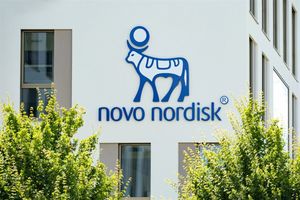- Six-year natural history comparison with maralixibat demonstrates event-free and transplant-free survival in patients with Alagille syndrome
- Maralixibat data highlighting predictors of event-free survival in patients with Alagille syndrome nominated for prestigious Alex Mowat Prize
- New analysis further characterizes 4-year growth improvement in Alagille syndrome, as well as reports on real world experience with LIVMARLI in ALGS patients with cholestatic pruritus
Mirum Pharmaceuticals, Inc. (Nasdaq: MIRM) presented data from clinical programs evaluating maralixibat (LIVMARLI®) in patients with Alagille syndrome at the 54th Annual ESPGHAN Meeting. These data further characterize LIVMARLI’s clinical potential in pediatric patients including evaluation of its impact on long-term event-free survival.
“We are thrilled for the opportunity to share key long-term findings from our clinical studies with the pediatric liver community during ESPGHAN,” said Dr. Pam Vig, head of research and development at Mirum. “The years of data that have been generated with maralixibat allow us to look critically at important long-term treatment goals such as growth, transplant rates and predictors of improved outcomes.”
Summaries of data presented during the congress are enclosed below. View the presentations in full within our Publications & Presentations section on our website.
H-O-018: Maralixibat-treated patients with ALGS demonstrate improved event-free survival in a natural history comparison with patients from the GALA database: Application of real-world evidence analytics
Dr. Bettina Hansen on behalf of Dr. Binita Kamath and the GALA Study Group (Oral presentation)
The presentation reported on an analysis independently conducted and presented by Dr. Bettina Hansen and the Global Alagille Alliance (GALA) Study Group, which has aggregated the largest global natural history clinical database established for ALGS. The analysis evaluated time to first clinical event using six years of follow-up data from pooled ALGS maralixibat studies (n=84) and compared it against an external natural history control cohort from the GALA clinical database. Events were defined as liver transplantation, biliary diversion surgery, decompensation events (ascites requiring therapy or variceal bleeding), or death. Additional analyses included transplant-free survival as well as several sensitivity and subgroup analyses to confirm robustness of the findings.
The analysis demonstrated a highly significant improvement in six-year event-free survival with a p-value of <0.0001 (HR: 0.305, 95% CI: 0.189-0.491) translating to a 70% overall reduction for clinical outcomes with maralixibat. The analysis also showed highly statistically significant improvements in transplant-free survival with a p-value of <0.0001 (HR: 0.332, 95% CI: 0.197-0.559).
H-O-012: Predictors of 6-year event-free survival in patients with ALGS treated with maralixibat, an IBAT inhibitor
Dr. Ron Sokol (Oral Presentation)
**Nominee for Alex Mowat Prize for Best Oral Presentation in Hepatology**
Data from the pooled maralixibat clinical studies with up to six years of follow up were analyzed to determine predictors of event-free and transplant-free survival in patients with ALGS. 76 patients met the criteria for inclusion in this analysis and 43 variables were tested as predictors. The laboratory markers that were predictive of event-free and transplant-free survival included specific thresholds of week 48 total bilirubin and week 48 serum bile acids. In addition, improvement in pruritus from baseline to week 48 was also predictive of event-free and transplant-free survival. 76% and 79% of maralixibat-treated ALGS patients remained event-free and transplant-free, respectively, at six years after treatment initiation. These data highlighted potential prognostic markers that could help to inform medical management for patients receiving maralixibat.
H-P-047: Significant improvement in cholestatic pruritus in patients with Alagille syndrome treated with maralixibat, an ileal bile acid transporter inhibitor: Real-world experience
Dr. Regino Gonzalez-Peralta, Dr. Douglas Mogul (Poster presentation)
The goal of this assessment was to evaluate the real-world application of maralixibat in children with ALGS and cholestatic pruritus. Three patients with ALGS were enrolled in the maralixibat Expanded Access Program with a variety of clinical manifestations. During the course of treatment with maralixibat, pruritus was assessed using the Clinician Scratch Scale (0-4 where 0=none and 4=cutaneous mutilation, hemorrhage and scarring was evident), and liver enzymes were monitored at varying time intervals in the months prior to and after starting maralixibat.
The data showed that treatment with maralixibat led to significant and durable amelioration of pruritus in these individual children with ALGS.
H-P-058: Maralixibat improves growth in patients with Alagille syndrome: A 4-year analysis
Dr. Binita Kamath (Poster presentation)
The analysis evaluated the impact of long-term maralixibat treatment on the growth and nutritional status of patients with ALGS, a disease for which patients typically present with significant growth deficits. Height and weight z-scores were evaluated in patients who participated in the maralixibat ICONIC study (along with the long-term, open label extension studies). The analysis included patients with ALGS who had both baseline and 204-week assessments for all eight parameters, and this group was divided into four subgroups based on height and weight z-score quartiles. No changes beyond standard of care in supplementation occurred during the study.
The data showed that patients with ALGS treated with long-term maralixibat (up to four years) had significantly increased height from baseline to week 204 (p=0.0004). Patients with the lowest height and weight z-scores at baseline had the greatest improvements in height and weight z-scores, and individuals that had the greatest catch-up weight gain also had the greatest catch-up height growth at week 48 (p=0.0013). The analysis also concluded that maralixibat-treated patients who achieved an sBA threshold <200 µmol/L had greater accelerated height, suggesting bile acid homeostasis may facilitate improvement in height deficits. Further analyses, including comparison to natural history cohort of patients with ALGS are needed to fully characterize the impact of maralixibat treatment on growth.
H-O-008: Maralixibat treatment response is associated with improved health-related quality of life in patients with bile salt export pump (BSEP) deficiency
Dr. Doug Mogul on behalf of Dr. Kathy Loomes (Oral presentation)
The analysis evaluated patients with BSEP deficiency, or PFIC2, following treatment with maralixibat. Patients with PFIC suffer from poor health-related quality of life (HRQoL) compared with healthy children, thus the aim of this analysis was to assess the impact of maralixibat treatment response at week 48 on HRQoL among a subset of children with BSEP deficiency from the INDIGO Phase 2 study.
Overall, patients with BSEP deficiency who achieved sBA treatment response (defined as >75% decrease from baseline or reduction to <102 µmol/L from baseline to week 48) experienced clinically meaningful improvements in PedsQL Generic Core Total Scale Score and Multidimensional Fatigue Total Scale Score, as well as statistically significant improvements in sleep and fatigue, as compared to those who did not achieve an sBA response.
Baseline characteristics were similar for responders and non-responders but baseline HRQoL Multidimensional Fatigue Score was lower for responders. With a minimal clinically important difference (MCID) of 4-5 points, the results demonstrated:
- PedsQL Generic Core Scale: responders improved significantly by >3× MCID (p=0.01)
- Multidimensional Fatigue Scale: responders improved significantly by >4× MCID (p=0.04)
- Family Impact Scale: clinically meaningful improvements did not reach statistical significance
In conclusion, response to maralixibat has the potential to significantly improve HRQoL in patients with PFIC.
H-P-057: Response to treatment with maralixibat in ALGS is associated with improved health-related quality of life
Dr. Binita Kamath, et al (Poster presentation)
The analysis evaluated 27 patients with ALGS who received 380 µg/kg per day of maralixibat and who remained in the ICONIC study through week 48, comparing their HRQoL outcomes as reported at baseline and at week 48. Treatment response to LIVMARLI was defined as a ≥1 point reduction in caregiver Itch-Reported Outcome Observer (ItchRO[Obs]) instrument score from baseline to week 48. In addition, the Pediatric Quality of Life (PedsQL™) questionnaires (Generic Core PedsQL, Family Impact Scale, and Multidimensional Fatigue Scale) were prospectively collected via a caregiver proxy report and analyzed retrospectively.
At week 48, 20 patients (74%) met the definition of ItchRO(Obs) response. With a minimal clinically important difference (MCID) of 4-5 points, the results demonstrated:
- PedsQL Generic Core Scale: increased on average by 8.8 points, almost two times the minimal clinically important difference in responders. Responders improved >2× the MCID (increase of 8.8 points).
- Multidimensional Fatigue Scale: Responders improved increase of 13.9 points) >2× the MCID (increase of 13.9 points).
- Family Impact Scale: Responders improved by >3× the MCID (increase of 16.8 points).
- Six sleep-related items demonstrated significantly larger changes from baseline to week 48 in responders (p<0.05).
These data demonstrate that the significant improvements in pruritus seen with maralixibat at week 48 of the ICONIC study are clinically meaningful and are associated with improvements in patients’ quality of life.
About LIVMARLI® (maralixibat) oral solution
LIVMARLI® (maralixibat) oral solution is an orally administered, once-daily, ileal bile acid transporter (IBAT) inhibitor approved by the U.S. Food and Drug Administration for the treatment of cholestatic pruritus in patients with Alagille syndrome (ALGS) one year of age and older and is the only FDA-approved medication to treat cholestatic pruritus associated with Alagille syndrome. For more information, please visit LIVMARLI.com.
LIVMARLI is currently being evaluated in late-stage clinical studies in other rare cholestatic liver diseases including progressive familial intrahepatic cholestasis (PFIC) and biliary atresia. LIVMARLI has received Breakthrough Therapy designation for ALGS and PFIC type 2 and orphan designation for ALGS, PFIC and biliary atresia. To learn more about ongoing clinical trials with LIVMARLI, please visit Mirum’s clinical trials section on the company’s website.
IMPORTANT SAFETY INFORMATION
LIVMARLI can cause side effects, including:
Changes in liver tests. Changes in certain liver tests are common in patients with Alagille syndrome and can worsen during treatment with LIVMARLI. These changes may be a sign of liver injury and can be serious. Your healthcare provider should do blood tests before starting and during treatment to check your liver function. Tell your healthcare provider right away if you get any signs or symptoms of liver problems, including nausea or vomiting, skin or the white part of the eye turns yellow, dark or brown urine, pain on the right side of the stomach (abdomen) or loss of appetite.
Stomach and intestinal (gastrointestinal) problems. LIVMARLI can cause stomach and intestinal problems, including diarrhea, stomach pain, and vomiting during treatment. Tell your healthcare provider right away if you have any of these symptoms more often or more severely than normal for you.
A condition called Fat Soluble Vitamin (FSV) Deficiency caused by low levels of certain vitamins (vitamin A, D, E, and K) stored in body fat. FSV deficiency is common in patients with Alagille syndrome but may worsen during treatment. Your healthcare provider should do blood tests before starting and during treatment.
Other common side effects reported during treatment were bone fractures and gastrointestinal bleeding.
About Mirum Pharmaceuticals
Mirum Pharmaceuticals, Inc. is a biopharmaceutical company dedicated to transforming the treatment of rare liver diseases. Mirum’s approved medication is LIVMARLI® (maralixibat) oral solution which is approved in the U.S. for the treatment of cholestatic pruritus in patients with Alagille syndrome one year of age and older.
Mirum’s late-stage pipeline includes two investigational treatments for debilitating liver diseases affecting children and adults. LIVMARLI, an oral ileal bile acid transporter (IBAT) inhibitor, is currently being evaluated in clinical trials for pediatric liver diseases and includes the MARCH Phase 3 clinical trial for progressive familial intrahepatic cholestasis (PFIC) and the EMBARK Phase 2b clinical trial for patients with biliary atresia. In addition, Mirum has an expanded access program open across multiple countries for eligible patients with ALGS and PFIC.
Mirum has submitted a Marketing Authorization Application to the European Medicines Agency for LIVMARLI for the treatment of cholestatic liver disease in patients with Alagille syndrome.
Mirum’s second investigational treatment, volixibat, an oral IBAT inhibitor, is being evaluated in three potentially registrational studies including the VISTAS Phase 2b clinical trial for adults with primary sclerosing cholangitis, the OHANA Phase 2b clinical trial for pregnant women with intrahepatic cholestasis of pregnancy, and the VANTAGE Phase 2b clinical trial for adults with primary biliary cholangitis.
Follow Mirum on Twitter, Facebook, LinkedIn and Instagram.
Forward-Looking Statements
This press release includes forward-looking statements pertaining to the Company’s planned participation at a scientific conference, including data presentation title and synopsis, which may include discussion of the Company’s clinical and research data, including the discovery, development and commercialization of our product candidates and technologies, and the therapeutic potential thereof, the continuation of our clinical trials, and the success of our collaborations with partners and any potential future collaborations. Such forward-looking statements are subject to risks and uncertainties that could cause actual results to differ materially from those expressed or implied in such statements. Applicable risks and uncertainties include those relating to our preclinical research and clinical programs and other risks identified under the heading “Risk Factors” included in our most recent Form 10-Q and Form 10-K filings and in other future filings with the SEC. The forward-looking statements contained in this press release reflect Mirum's current views with respect to future events, and Mirum does not undertake and specifically disclaims any obligation to update any forward-looking statements, except as required by law.
View source version on businesswire.com: https://www.businesswire.com/news/home/20220624005088/en/
Contacts
Media Contact:
Erin Murphy
media@mirumpharma.com
Investor Contacts:
Ian Clements, Ph.D.
ir@mirumpharma.com
Sam Martin
Argot Partners
ir@mirumpharma.com







